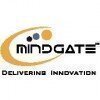
i
Blazeclan
Technologies
Filter interviews by
Blazeclan Technologies Interview Questions and Answers
24 Interview questions
The presales process involves understanding customer needs, creating proposals, and presenting solutions.
Qualifying leads and understanding customer requirements
Creating tailored proposals and solutions
Presenting solutions to customers and addressing any concerns
Negotiating terms and pricing
Closing the deal and handing over to the sales team
List is mutable, tuple is immutable in Python.
List can be modified after creation, tuple cannot.
List uses square brackets [], tuple uses parentheses ().
Example: list_example = [1, 2, 3], tuple_example = (4, 5, 6)
Data lake is a vast pool of raw data while data warehouse is a structured repository for processed data.
Data lake stores raw, unstructured data in its native format.
Data warehouse stores processed, structured data for easy analysis and reporting.
Data lake allows for storing large amounts of data at a low cost.
Data warehouse is optimized for querying and analyzing data efficiently.
Data lake is suitable for big data...
Pros and cons of cloud computing
Pros: scalability, cost-effectiveness, flexibility, automatic updates
Cons: security concerns, dependency on internet connection, potential downtime
I have worked on AWS services such as EC2, S3, RDS, Lambda, and CloudFormation for various use cases.
EC2 - for hosting applications and websites
S3 - for storing and retrieving large amounts of data
RDS - for managing relational databases
Lambda - for serverless computing and running code without provisioning or managing servers
CloudFormation - for automating the deployment of infrastructure as code
I used a variety of tools in my last organization including AWS, Azure, and Google Cloud Platform.
Utilized AWS for cloud storage and computing services
Worked with Azure for virtual machines and networking
Managed Google Cloud Platform for data analytics and machine learning
ETL stands for Extract, Transform, Load. It is a process used to extract data from various sources, transform it into a consistent format, and load it into a target database or data warehouse.
Extract: Data is extracted from multiple sources such as databases, files, APIs, etc.
Transform: Data is cleaned, standardized, and transformed into a consistent format to meet the requirements of the target system.
Load: The t...
Creating a VPC involves defining IP address ranges, subnets, route tables, and security groups.
Define IP address ranges for the VPC
Create subnets within the VPC
Set up route tables to control traffic within the VPC
Configure security groups to control inbound and outbound traffic
To add a plugin in Jenkins, you can use the Jenkins web interface or manually upload the plugin file.
Navigate to Jenkins dashboard and click on 'Manage Jenkins'
Select 'Manage Plugins' and go to 'Available' tab
Search for the desired plugin, select it, and click 'Install without restart'
Alternatively, you can manually upload the plugin file under 'Advanced' tab in 'Upload Plugin' section
Generators are functions that allow you to declare a function that behaves like an iterator.
Generators use the yield keyword to return a generator object that can be iterated over.
They allow for lazy evaluation, meaning that they only generate values as needed.
Generators are memory efficient as they do not store all values in memory at once.
They can be used to generate an infinite sequence of values.
Example: def m...
Blazeclan Technologies Interview Experiences
21 interviews found
(2 Questions)
- Q1. Walk us through the end to end presales process
- Ans.
The presales process involves understanding customer needs, creating proposals, and presenting solutions.
Qualifying leads and understanding customer requirements
Creating tailored proposals and solutions
Presenting solutions to customers and addressing any concerns
Negotiating terms and pricing
Closing the deal and handing over to the sales team
- Q2. Provide a list of cloud services AWS/Azure
- Ans.
AWS and Azure offer a wide range of cloud services for various business needs.
Compute services (e.g. AWS EC2, Azure Virtual Machines)
Storage services (e.g. AWS S3, Azure Blob Storage)
Database services (e.g. AWS RDS, Azure SQL Database)
Networking services (e.g. AWS VPC, Azure Virtual Network)
Analytics services (e.g. AWS Redshift, Azure HDInsight)
(2 Questions)
- Q1. Scenario based questions on how will you prepare a greenfield cloud environment setup? How the data modernization and data engineering is done. What are the services related to it. Define the commercial mo...
- Q2. Any questions for us ?
- Ans.
It's always good to have a few questions prepared to show your interest in the role and company.
Ask about the team dynamics and how collaboration is encouraged
Inquire about the company's approach to innovation and how they stay ahead of competitors
Ask about the typical challenges faced in the presales and bid management process and how they are overcome
Interview Preparation Tips
Learn presales process
Learn commercial models
(2 Questions)
- Q1. Difference between list and touple
- Ans.
List is mutable, tuple is immutable in Python.
List can be modified after creation, tuple cannot.
List uses square brackets [], tuple uses parentheses ().
Example: list_example = [1, 2, 3], tuple_example = (4, 5, 6)
- Q2. Difference between datalake and datawarehouse
- Ans.
Data lake is a vast pool of raw data while data warehouse is a structured repository for processed data.
Data lake stores raw, unstructured data in its native format.
Data warehouse stores processed, structured data for easy analysis and reporting.
Data lake allows for storing large amounts of data at a low cost.
Data warehouse is optimized for querying and analyzing data efficiently.
Data lake is suitable for big data anal...
(2 Questions)
- Q1. What is pros and cons of cloud
- Ans.
Pros and cons of cloud computing
Pros: scalability, cost-effectiveness, flexibility, automatic updates
Cons: security concerns, dependency on internet connection, potential downtime
- Q2. What are the services you have worked on aws and thier use case?
- Ans.
I have worked on AWS services such as EC2, S3, RDS, Lambda, and CloudFormation for various use cases.
EC2 - for hosting applications and websites
S3 - for storing and retrieving large amounts of data
RDS - for managing relational databases
Lambda - for serverless computing and running code without provisioning or managing servers
CloudFormation - for automating the deployment of infrastructure as code
Skills evaluated in this interview
(2 Questions)
- Q1. What do you know about cloud computing
- Q2. Difference between Scrum vs agile
- Ans.
Agile is a methodology that focuses on flexibility and adaptability, while Scrum is a specific framework within Agile that emphasizes teamwork and iterative progress.
Agile is a broader methodology that focuses on flexibility and adaptability in project management.
Scrum is a specific framework within Agile that emphasizes teamwork, accountability, and iterative progress.
Agile principles can be applied to various industr...
Skills evaluated in this interview
I appeared for an interview in Dec 2024, where I was asked the following questions.
- Q1. How HashMap internally work.
- Ans.
HashMap uses an array of buckets to store key-value pairs, utilizing hashing for efficient data retrieval.
HashMap stores data in key-value pairs, where each key is hashed to determine its index in an array.
When a key-value pair is added, the key is hashed, and the resulting hash code determines the bucket index.
If two keys hash to the same index (collision), HashMap uses a linked list or tree structure to store multipl...
- Q2. Explain Saga design pattern.
- Ans.
Saga pattern manages distributed transactions by breaking them into smaller, manageable steps with compensating actions.
Saga pattern is used in microservices to handle long-running transactions.
It consists of a series of local transactions, each followed by a compensating transaction.
Example: In an online order system, if payment fails, a compensating transaction can cancel the order.
Sagas can be implemented using chor...
(1 Question)
- Q1. Scenario based questions on AKS
I applied via Company Website and was interviewed in Aug 2023. There were 4 interview rounds.

(1 Question)
- Q1. How the ETL works
- Ans.
ETL stands for Extract, Transform, Load. It is a process used to extract data from various sources, transform it into a consistent format, and load it into a target database or data warehouse.
Extract: Data is extracted from multiple sources such as databases, files, APIs, etc.
Transform: Data is cleaned, standardized, and transformed into a consistent format to meet the requirements of the target system.
Load: The transf...
(1 Question)
- Q1. Which transformation you have used in your recent project
(1 Question)
- Q1. What is your salary expectation
Interview Preparation Tips
Skills evaluated in this interview
I applied via Walk-in and was interviewed before Feb 2023. There were 2 interview rounds.
(2 Questions)
- Q1. Tell me about the last project
- Q2. Tools Work on last organization
- Ans.
I used a variety of tools in my last organization including AWS, Azure, and Google Cloud Platform.
Utilized AWS for cloud storage and computing services
Worked with Azure for virtual machines and networking
Managed Google Cloud Platform for data analytics and machine learning
(1 Question)
- Q1. Tell me about yourself
I applied via Naukri.com and was interviewed in May 2023. There were 2 interview rounds.

(2 Questions)
- Q1. How to create VPC?
- Ans.
Creating a VPC involves defining IP address ranges, subnets, route tables, and security groups.
Define IP address ranges for the VPC
Create subnets within the VPC
Set up route tables to control traffic within the VPC
Configure security groups to control inbound and outbound traffic
- Q2. How to add plugin in jenkins
- Ans.
To add a plugin in Jenkins, you can use the Jenkins web interface or manually upload the plugin file.
Navigate to Jenkins dashboard and click on 'Manage Jenkins'
Select 'Manage Plugins' and go to 'Available' tab
Search for the desired plugin, select it, and click 'Install without restart'
Alternatively, you can manually upload the plugin file under 'Advanced' tab in 'Upload Plugin' section
Skills evaluated in this interview
I applied via Campus Placement and was interviewed in Jul 2022. There were 4 interview rounds.
2 coding questions were asked followed by some technical mcq.
(1 Question)
- Q1. About project and new technology as I knew about blockchain..DSA questions were also asked..Interview went about 40 minutes.
(1 Question)
- Q1. It was managerial round were DSA questions and few HR questions were asked to me. It went for 30 minutes.
(1 Question)
- Q1. Around 5 minutes interview were HR questions were asked.
Interview Preparation Tips
Top trending discussions






Blazeclan Technologies Interview FAQs
Some of the top questions asked at the Blazeclan Technologies interview -
The duration of Blazeclan Technologies interview process can vary, but typically it takes about less than 2 weeks to complete.
Tell us how to improve this page.
Blazeclan Technologies Interviews By Designations
- Blazeclan Technologies Senior Cloud Engineer Interview Questions
- Blazeclan Technologies Devops Engineer Interview Questions
- Blazeclan Technologies Data Architect Interview Questions
- Blazeclan Technologies Data Analyst Interview Questions
- Blazeclan Technologies Software Developer Interview Questions
- Blazeclan Technologies Senior Data Engineer Interview Questions
- Blazeclan Technologies Cloud Support Engineer Interview Questions
- Blazeclan Technologies Automation Test Engineer Interview Questions
- Show more
Interview Questions for Popular Designations
- Software Engineer Interview Questions
- Intern Interview Questions
- Senior Associate Interview Questions
- Sales Executive Interview Questions
- Graduate Engineer Trainee (Get) Interview Questions
- Associate Software Engineer Interview Questions
- Java Developer Interview Questions
- Data Analyst Interview Questions
- Show more
Overall Interview Experience Rating
based on 16 interview experiences
Difficulty level
Duration
Interview Questions from Similar Companies
Blazeclan Technologies Reviews and Ratings
based on 198 reviews
Rating in categories
|
Cloud Engineer
142
salaries
| ₹4.6 L/yr - ₹10.5 L/yr |
|
Data Engineer
128
salaries
| ₹4.2 L/yr - ₹10.4 L/yr |
|
Senior Cloud Engineer
119
salaries
| ₹6.9 L/yr - ₹22.2 L/yr |
|
Senior Cloud Operations Engineer
82
salaries
| ₹7.6 L/yr - ₹16.6 L/yr |
|
Cloud Application Engineer
81
salaries
| ₹5 L/yr - ₹11.3 L/yr |

Softenger

Capital Numbers Infotech

JK Tech

DesignTech Systems
- Home >
- Interviews >
- Blazeclan Technologies Interview Questions












